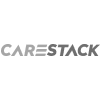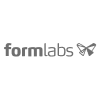Build, Measure, Learn with Lean Experimentation

Picture this: Your team just spent six weeks building a new feature that your gut told you customers would love. The feature launches, and... silence. No adoption, no engagement, just the haunting question: "Where did we go wrong?"
This scenario plays out in product teams every day, and it's not because these teams aren't smart or capable. It's because they're missing a crucial element: understanding true customer intent before building.
The Evolution of Product Validation
The Lean Startup methodology revolutionized how we think about product development with its Build-Measure-Learn loop. But in today's fast-paced product landscape, even this approach needs an upgrade. Why? Because traditional build-first approaches, even "lean" ones, still risk investing resources in the wrong direction.
The key is to inject intent validation before the build phase. Instead of assuming what customers want and building an MVP to test that assumption, what if you could understand customer intent before writing a single line of code?
Understanding Intent: The Missing Link
Here's where the traditional Build-Measure-Learn loop falls short: it often skips the crucial step of understanding why customers might want a feature in the first place. Customer intent isn't just about what features they might use, it's about understanding the underlying motivations and needs that drive their behavior.
For example, when a product team sees customers dropping off during onboarding, the traditional approach might suggest building a better tutorial. But what if the real intent isn't about needing more guidance? What if customers are actually hesitating because they don't understand the value proposition at that specific moment?
The Enhanced Build-Measure-Learn Loop
Let's reimagine the loop with intent validation at its core:
Intent Validation (New First Step)
Before building anything, understand the true customer intent through contextual microsurveys triggered at key moments. This isn't about asking customers what they want – it's about understanding their motivations in real-time.
Smart Building
Once you understand customer intent, you can build with confidence. This might mean creating a full feature, or it could mean running a lean experiment to further validate your understanding.
Intelligent Measurement
Move beyond basic analytics. Measure not just what customers do, but why they do it. This means capturing both quantitative metrics and qualitative insights about customer intent at every step.
Deep Learning
Transform your insights into actionable next steps, always keeping customer intent at the center of your decision-making process.
Lean Experiments: Understanding Intent Without Code
Traditional lean experiments like landing pages and painted door tests are valuable, but they often miss the crucial "why" behind customer actions. Here's how to enhance these experiments with intent validation:
Instead of just adding a fake button to measure clicks, trigger a contextual microsurvey when customers show interest. This helps you understand not just if customers want a feature, but why they want it and what they expect it to do for them.
For example, if you're considering adding a new collaboration feature, don't just count clicks on a fake "Share" button. Use intelligent triggers to understand customer intent when they explore sharing-related actions. Are they looking to get feedback? Delegate work? Show progress to stakeholders? Understanding these motivations helps you build the right solution.
Making Decisions with Intent Data
The real power of this enhanced approach comes when making product decisions. Instead of just knowing that 30% of customers clicked on your painted door test, you might learn that:
Customers who clicked were primarily trying to solve a specific workflow problem
The highest intent came from a particular customer segment at a specific moment in their journey
Customers expected the feature to work in a way you hadn't considered
This deep understanding of intent helps you not just decide whether to build something, but how to build it in a way that truly serves your customers' needs.
The Path Forward
Building products isn't about guessing what customers want or even just measuring what they do. It's about understanding their true intent and building solutions that align with their actual needs and motivations.
Want to see how leading product teams are already using this enhanced approach? We'd love to show you how Samelogic helps teams understand and act on customer intent in real-time.
Understand customer intent in minutes, not months























































